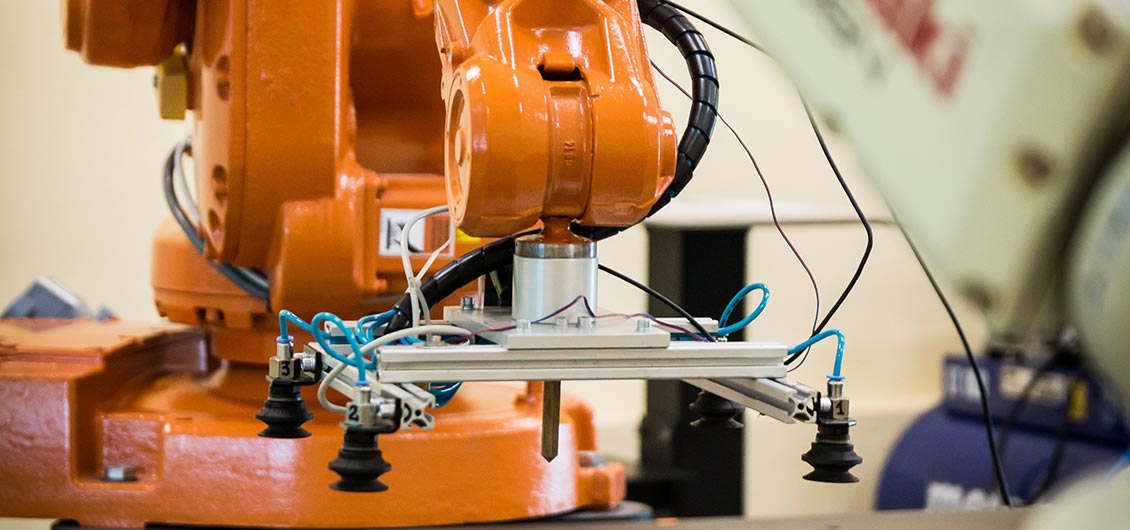Compared to other types of machine-tending operations, collaborative robots, or COBOTS, are ideal for injection molding. In fact, applications yield higher productivity gains due to the amount of time the process requires.
With other types of machine-tending operations, it takes several minutes for a part to be molded. In this time, a human worker will typically move on to another operation. While waiting for the worker to return and remove the part, the machine will sit idle, or the worker stands idle while waiting for the machine to complete its process.
Because the operations are not synchronized, productivity suffers. However, an injection molding machine can now be tended around the clock with COBOTS, a cost-effective, easy-to-use solution.
The Evolution of COBOTS
Full servo-controlled robots of any kinematic configuration were rarely employed in injection molding applications thirty years ago. The most common approach used in injection molding applications was a simple three-axis, point-to-point Cartesian robot mounted to the machine. These simple robots could quickly extract parts from the mold and deliver them to conveyors or totes with the help of enough Z, or vertical, stroke.
In the last twenty years, full servo-controlled Cartesian robots offered greater precision and control of end-of-arm tools. Five years later, molders increasingly began utilizing six-axis robots. This development advanced due to several technical and business factors that endure today:
- Shorter product life cycles.The momentum of product updates and new introductions demands a steady change in manufacturing processes.
- Enhanced surface finish.Customer standards require that all parts be carefully handled, from the mold to the final package.
- Additional post-mold processes. Customers are looking for more complete parts and assemblies, and molders are happy to oblige. Common automation tasks now include degating, trimming, polishing, decorating, assembling, wrapping, and packaging.
- Demanding setup.Product customization, small lot sizes, and on-demand production to reduce inventory drive short runs.
The Appeal of COBOTS
Collaborative robots (COBOTS) were adopted in the last ten years, adding a layer of safety, mobility, and user-programmability than the standard six-axis robots. The appeal of using COBOTS in injection molding is the positioning flexibility and overall work envelope. With more choices and options in all phases of material handling, assembly, and other applications, COBOTS provide additional degrees of freedom which translate into real process advantages:
- Diminished tooling costs.While four-axis Cartesian robots often require complex tooling, the range of motion and flexibility of six-axis articulated robots simplify tooling along with gripper costs and complexity.
- Flexibility with pre-and post-mold processes.Complex motions long with demanding angles and positions can be executed by placing inserts into the mold and moving parts through post-mold processes.
- Optimal maintenance life.Since six-axis robots are sealed, most require less maintenance with increased uptime. Conversely, Cartesian robots with exposed drive trains need regular maintenance.
- Precision inserts.With positioning flexibility and repeatability of six-axis robots, acquiring and inserting precision inserts is possible.
- Simplified extraction of complex parts.While complex parts can be difficult to remove without ejectors, the dexterity of six-axis robots allows parts to be gently pulled out of the mold.
- Obstacles avoided.Though tiebars, slides, hoses, and clamps can often interfere with part motions, six-axis robots provide the flexibility to maneuver around the mold.
- Mounting options.Many six-axis robots can be mounted in various orientations to optimize layout, reach, and cycle time.
- Overhead clearance.A six-axis robot can be mounted over the injection machine even in very low-ceiling facilities.
- Ease of access.Even with a six-axis robot mounted on the machine, molds can be changed, and maintenance can still easily access the machine when needed.
COBOTS are dominating the injection molding market. And though COBOTS offer all the benefits mentioned above, they also provide significant advantages that are not possible with traditional automation:
- Interaction with operators.Designed to operate safely in close proximity to operators, other COBOTS, and machinery, COBOTS maximize the interaction between skilled operators, increasing productivity.
- Increased floor space.After a risk assessment, COBOTS generally do not require heavy, expensive space-intensive safety fencing or access doors that come with traditional automation. Because they can work safely near humans, this frees up even more floor space.
- Because COBOTS are lightweight and easy to set up, they are often used as manufacturing tools, moved from machine to machine.
- Easy programming.With intuitive programming, the setup, programming, and interfacing of COBOTS are straightforward, with no special software language to learn.
- Quick ROI.With simplified programming and setup, pre-engineered peripherals, and reduced or no guarding, COBOTS add automation at approximately half the cost of traditional robots.
PFA can help with your robotic automation project
Humans remain the most flexible and intelligent resource on the production floor. COBOTS can crank up production levels and add value to existing jobs by allowing humans to find passion once again and gather knowledge about what they produce. COBOTS are improving work conditions and empowering humans to have more fulfilling careers in the manufacturing industry. Let PFA Incorporated help you transition to collaborative automation and get the most out of it by contacting us today or calling 262-250-4410.


